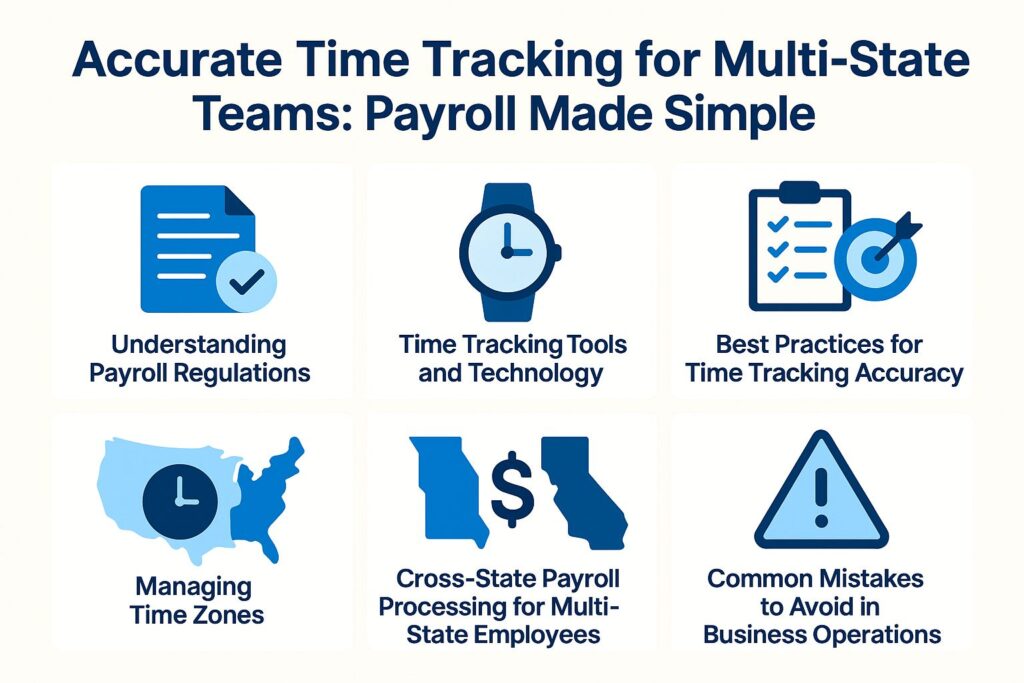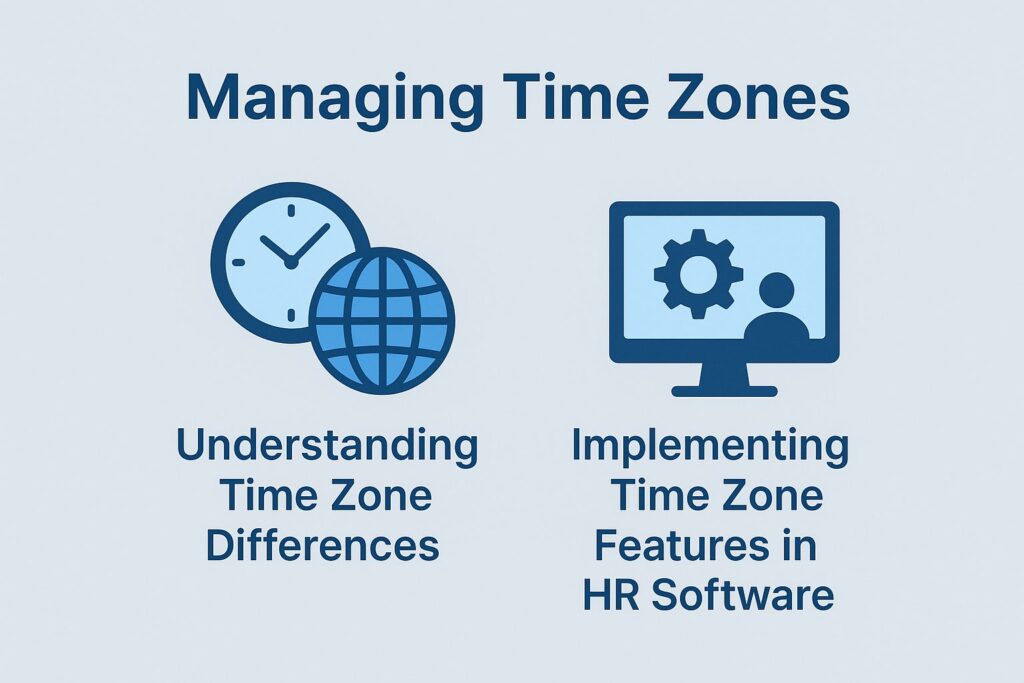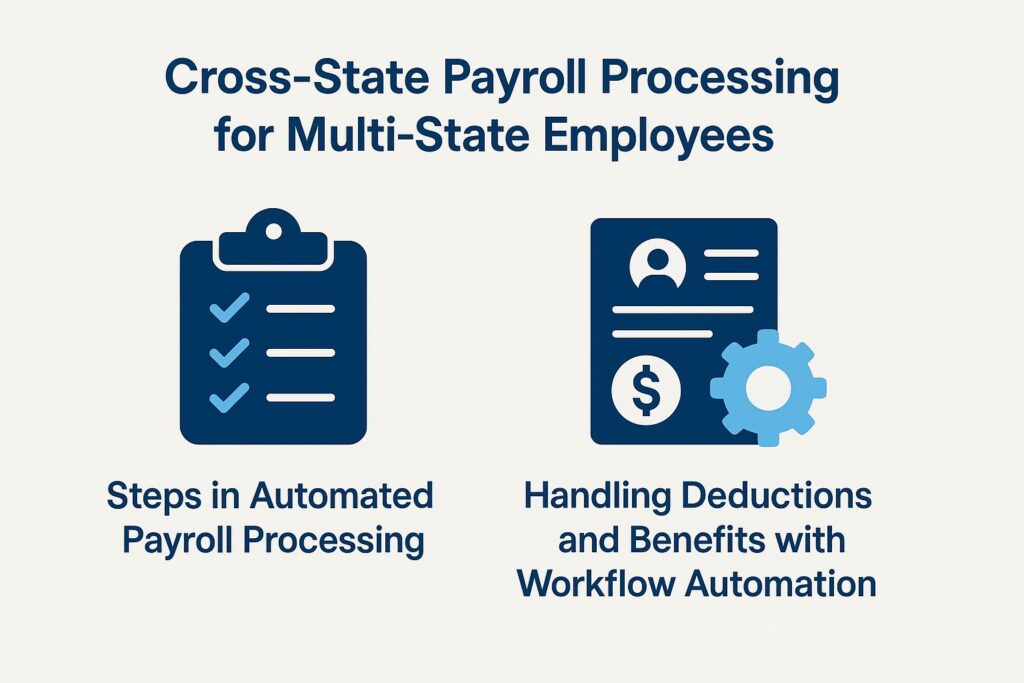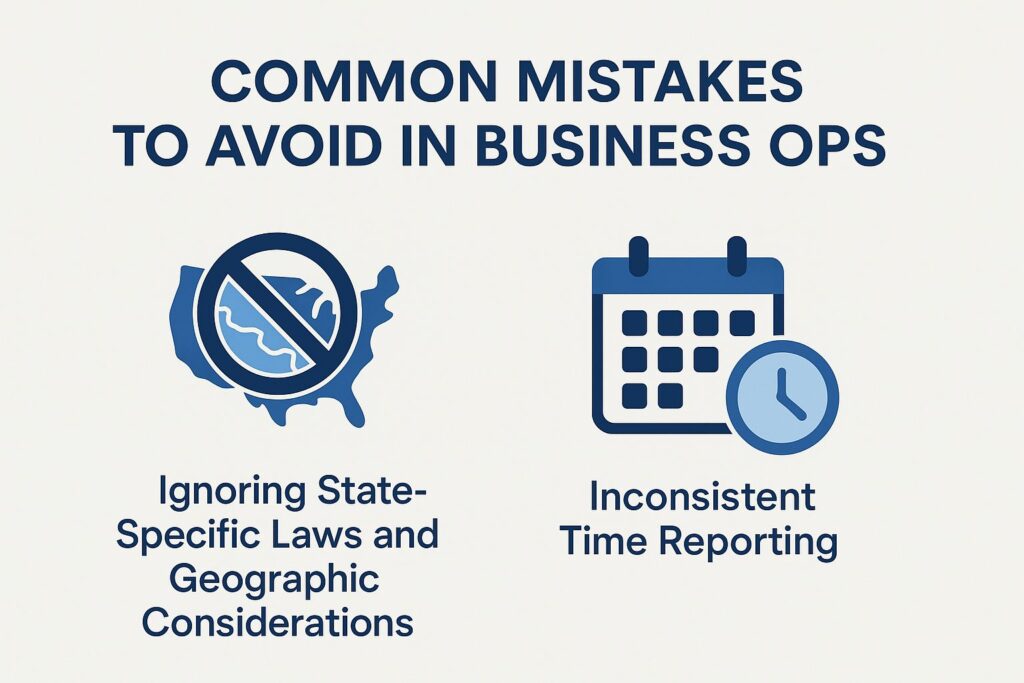
Accurate Time Tracking for Multi-State Teams: Payroll Made Simple
Keeping track of time shouldn’t feel like a juggling act, especially when your team spans multiple states. Keeping track of time accurately is essential for easy payroll handling, but dealing with various rules can be complicated. Learn how to handle the difficulties of time zones and different labor laws, and find the best tools to make your payroll process easier. Get ready to improve how you handle time tracking so every minute counts!
Keeping Track of Time
Tracking time accurately is important for businesses to stay organized and work well. Recording work hours correctly helps keep productivity high and supports project management. By keeping detailed records, companies can distribute resources better, handle work tasks, and meet deadlines. This practice helps with budgeting and boosts employee responsibility and satisfaction. Good time tracking is essential for reaching company goals and achieving success.
Companies that carefully monitor employee work hours can manage their staff more effectively, ensuring payroll accuracy and enhancing employee engagement and happiness.
Using reliable time tracking tools like TSheets and Clockify can greatly cut down on errors in payroll processing, making financial reports better. TSheets has GPS tracking and can be used on mobile devices, which is perfect for teams who travel.
Clockify’s reporting features give managers useful information, allowing them to identify trends in productivity, unlike other tools.
Setting these software solutions up typically involves just a few steps:
- Create accounts for employees.
- Establish project categories.
- Integrate with payroll software for seamless experience.
In a short time, employers may see reduced mistakes, faster payroll handling, and a workforce that is more involved.
Challenges Faced by Multi-State Teams
Handling multi-state teams comes with its own challenges, such as dealing with various labor laws and ensuring compliance with state regulations.
To make payroll management easier, think about using platforms like Gusto.It handles payroll automatically and provides resources to meet each state’s compliance rules. For example, Gusto handles W-2 forms correctly for various states and keeps you informed about local tax rules.
Regular training sessions are very useful. These sessions should focus on specific state laws and best practices for remote work.
By building a compliance-focused environment and using technology, you can reduce risks tied to handling remote teams across different states.
Understanding Payroll Regulations
Knowing the differences between federal and state payroll rules is important for following the law and calculating wages accurately.

Federal vs. State Regulations in Payroll Management
Federal regulations provide a baseline for employee rights, but individual states can impose additional requirements that employers must follow to remain compliant.
For example, while the Fair Labor Standards Act mandates a federal minimum wage of $7.25, many states have set higher minimums, such as California at $15 per hour.
Zenefits provides tools that help businesses handle payroll and follow regulations more easily. Employers should regularly consult state labor department websites to stay updated on local regulations.
Creating a compliance checklist can help your business consistently meet both federal and state rules, aiding in compliance tracking.
Overtime Laws Across States
Overtime rules are different in each state, so companies must understand what is required to correctly calculate overtime and pay employees fairly.
For example, California mandates that employees earn time-and-a-half after 8 hours in a day, while Texas follows the federal standard, only requiring overtime after 40 hours per week.
Tools like Paycor simplify following rules by tracking employee hours and calculating overtime pay according to state regulations.
Set up geographic-specific rules so that your payroll reflects the correct guidelines-this helps prevent costly penalties. Using these systems significantly lowers the workload for administration and keeps you following different rules properly.
Tax Implications for Multi-State Employees
Employing individuals across state lines can lead to complex tax compliance challenges, including differing state income tax rates and unemployment insurance requirements.
To handle these challenges well, it is important to know each state’s tax rules. Tools like QuickBooks can simplify the process by automatically calculating the appropriate tax withholding based on the employee’s work location.
For example, if you have an employee working in California and another in Texas, QuickBooks will adjust the state tax deductions accordingly.
Think about talking to a tax expert to follow the rules, especially if you handle employee payments in different states, to prevent expensive fines.
Time Tracking Tools and Technology
Picking good time tracking tools is important for keeping an eye on employee work and handling payroll correctly.

Types of Time Tracking Software Solutions
You can find different kinds of time tracking software, from basic apps for phones to detailed tools that work with project management systems.
When selecting the best time tracking tool, consider your specific needs.
- For teams, Toggl offers intuitive interfaces and integrates with over 100 apps for seamless project management at $10/month.
- Harvest offers a tool for tracking time and managing expenses, costing $12 per month, perfect for freelancers.
- On the other hand, Clockify provides a free version with essential features, suitable for startups.
Identify your primary use case-whether it’s individual tracking, team collaboration, or task management-to choose effectively.
Integration Capabilities with Payroll Systems
Linking time tracking software with payroll systems can make tasks easier, minimize mistakes, and meet legal requirements.
Tools like Xero and BambooHR offer seamless software integration with popular time-tracking solutions such as TSheets and ClockShark.
When these systems are linked, businesses can automatically update work hours to payroll, ensuring employees receive accurate pay.
For instance, once employee hours are approved in TSheets, they can directly feed into BambooHR’s payroll module, eliminating manual entry errors.
This integration facilitates real-time reporting, allowing managers to monitor hours and productivity, thereby improving overall workforce management.
Mobile vs. Desktop Solutions
Mobile time tracking apps are great for those working from home, while desktop programs usually have more features for people working in the office.
Mobile apps like Hubstaff let users record time while they are moving, with simple features like GPS tracking and timesheet submissions, which is perfect for teams working remotely.
Desktop applications such as TimeCamp provide detailed reports and work together with project management tools, helping increase productivity in an office.
TimeCamp can make detailed invoices, which simplifies billing. Hubstaff captures screenshots automatically to track progress as it happens.
Depending on your work environment, choosing the right tool can significantly impact project efficiency.
Best Practices for Time Tracking Accuracy
Using effective time tracking methods can improve payroll processes and guarantee accurate data.

Establishing Clear Policies for Employee Self-Service
Setting clear rules for recording work hours, such as clock-in/clock-out procedures, helps all employees see why it is important to note their hours correctly and regularly.
To create effective time tracking policies, start by defining expectations. Specify the exact hours employees should log daily and clarify which activities should be tracked, such as meetings or project work.
Tools like Toggl and Harvest simplify this process, offering features that remind employees to log their hours and categorize tasks, enhancing task management efficiency.Talk about why tracking data matters and explain how having the right information helps with payroll and planning project timelines.
Regular team meetings can reinforce these policies, ensuring everyone remains accountable and understands their role in maintaining compliance.
Training Employees on Time Tracking Tools and Technology
Training employees effectively on time tracking tools can drastically reduce errors and improve overall productivity.
To establish an effective training plan, start with interactive workshops that allow employees to practice using the tools, such as Harvest or Toggl.
Follow these with e-learning modules hosted on platforms like Litmos, which provide flexible learning. Include real-life examples in the training, so employees can understand how to apply them in practice.
Schedule regular meetings and review sessions every few months to improve employee management, address questions, and reinforce learning.These methods help employees feel sure of themselves and effective in using time tracking tools, which increases productivity.
Regular Payroll Audits and Reviews
Regularly checking time tracking records can improve payroll accuracy and keep data safe.
To perform effective audits, use tools like TSheets or Clockify for live tracking and creating reports. Aim for a quarterly review to catch errors early.
During the audit, compare tracked hours against payroll records, paying close attention to overtime and discrepancies in employee hours. Involve employees by asking for their thoughts on time entries, which can reveal any mistakes.
Set up automatic notifications for large differences between tracked hours and expected hours to help manage payroll accuracy.
Managing Time Zones
Managing time zones correctly is important for companies with remote workers or employees in different states to keep time tracking and payroll calculations accurate.

Understanding Time Zone Differences
Being aware of time zone differences can help avoid payroll mistakes and improve scheduling efficiency.
Using tools to handle various time zones is essential for keeping time correctly. For instance, applications like World Time Buddy allow scheduling meetings across different regions, providing a clear visual of time discrepancies.
Software like Deputy and When I Work manage scheduling and automatically track time based on local employee hours. Using these tools can improve employee productivity and make the workplace run smoothly, ensuring that everyone is synchronized and paid fairly, regardless of their location.
Implementing Time Zone Features in HR Software
Adding time zone settings in time tracking software can greatly improve the correctness of employee time records, ensuring transparency and consistency.
For instance, tools like Time Doctor allow you to assign time zones to each employee profile, ensuring accurate time tracking and effective management of labor costs regardless of your team members’ locations.
To set this up, go to the employee settings, choose the right time zone, and make sure everyone knows their assigned zones. This makes things easier to use and helps the team work better.
You might consider using Slack for real-time communication about time-sensitive tasks, as it automatically adjusts to user time zones.
Using these tools together can simplify project management and resource management, helping teams in different places work together more effectively.
Cross-State Payroll Processing for Multi-State Employees
Managing payroll for staff in various states requires careful categorization to comply with laws and maintain accurate records.

Steps in Automated Payroll Processing
Learning about payroll processing helps companies handle their finances effectively, keep track of work hours correctly, and make sure employees receive their pay on time.
To make payroll processing easier, consider using tools like Gusto, which handles different payroll tasks automatically.
- First, input employee data, including hours worked and salary information. Gusto handles tax withholdings and automatically files necessary tax forms, reducing manual effort.
- Set up direct deposit so employees get paid on payday without waiting. Integrate Gusto with your accounting software for seamless financial reporting.
This solution can reduce payroll processing time from hours to just minutes, allowing you to focus on other critical business operations.
Handling Deductions and Benefits with Workflow Automation
Correctly managing payroll deductions and benefits is important for following rules and ensuring employee satisfaction when operating in multiple states.
Software like Zenefits simplifies payroll deductions by handling the math and distribution on its own. The platform follows state rules, allowing settings for different tax rates and benefits specific to each area, offering a user-friendly interface.
For example, set alerts for when to sign up for health insurance and when payments need to be made, and make sure paycheck deductions are correct. User-friendly dashboards with real-time data and analysis display details on employee benefit selections and tax withholdings, ensuring your payroll is clear and complies with regulations in all states.
Common Mistakes to Avoid in Business Operations
It’s important to avoid common mistakes in time tracking and payroll processing to follow the rules and avoid expensive errors. For those looking to optimize their processes, related insight: 5 Common Payroll Mistakes to Avoid with Outsourcing.

Ignoring State-Specific Laws and Geographic Considerations
Ignoring state-specific laws can lead to serious compliance issues and potential legal challenges for businesses with multi-state operations, affecting human resources management.
For example, a retail company operating in multiple states faced a hefty $250,000 penalty for failing to adhere to California’s stringent privacy laws.
To prevent these mistakes from happening again, companies can use compliance management tools like TrustArc, which monitor rule changes and give specific advice.
Resources like the National Conference of State Legislatures offer updates on state laws that may impact operations.
Frequently checking these tools and keeping up-to-date can reduce risks and maintain compliance with different legal rules in various states.
Inconsistent Time Reporting
Inconsistent time reporting can significantly impact payroll accuracy and employee satisfaction, creating challenges in attendance tracking and workforce management.
To make reporting more consistent, use automatic alerts with tools such as Slack or Asana, improving auditing processes.
Set up weekly check-ins where employees can log their hours using electronic timesheets, and integrate time tracking software such as Toggl or Harvest, which offers alerts for untracked time, enhancing time allocation.
Encourage a culture of accountability by promoting regular updates during team meetings, allowing employees to share any challenges. Simplifying this process can improve accuracy, protect user rights, and ensure everyone is on the same page with their reporting tasks. This builds team unity and increases trust.
About the Author
Kim Anderson is a Harvard University graduate with a bachelor’s degree in Accounting and Finance. She’s the owner of a successful payroll outsourcing firm based in California and a contributing writer for My Payroll Outsourcing. With 14 years of experience, Kim helps businesses streamline compliance, minimize administrative risk, and manage multi-state workforces with confidence.

